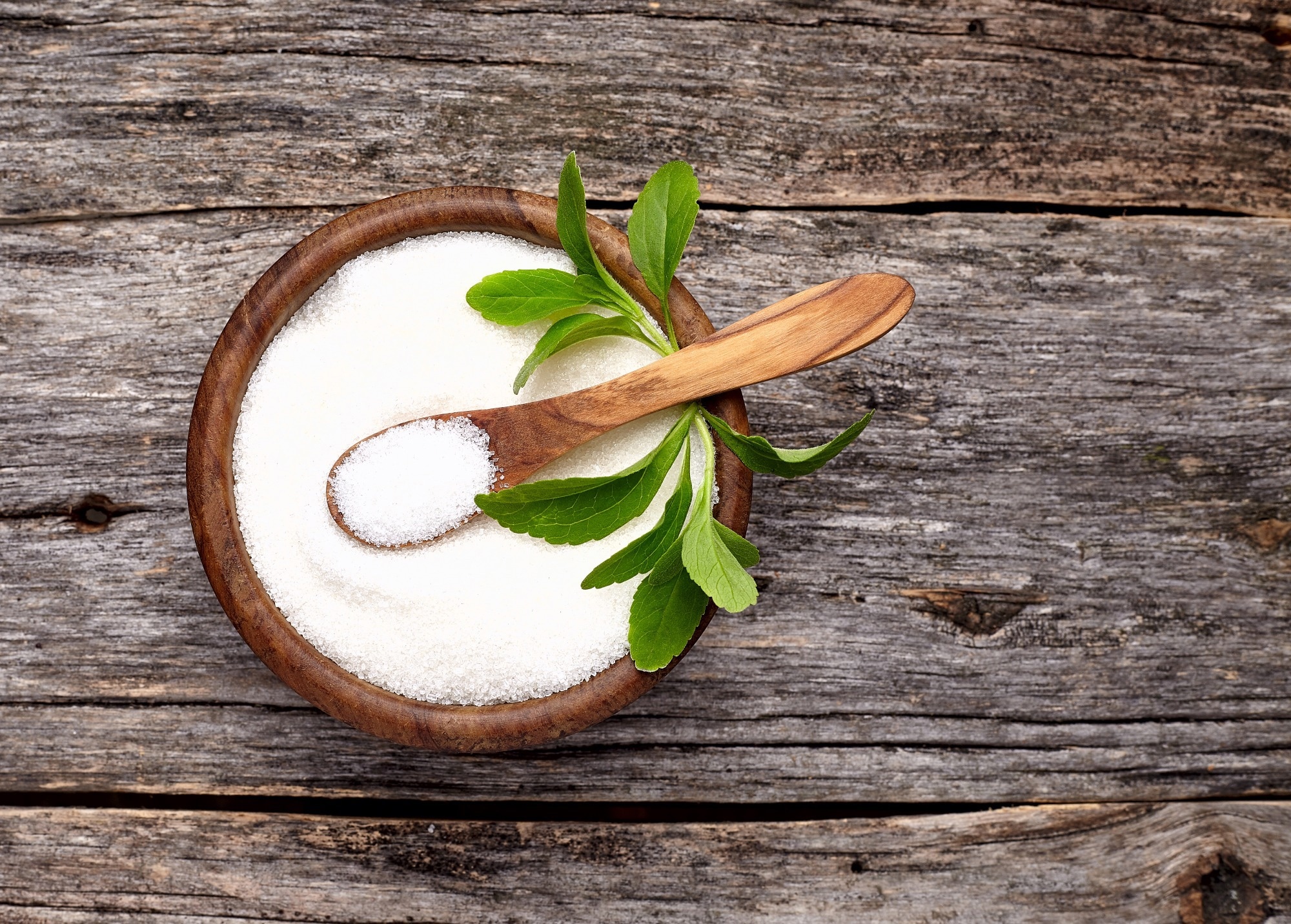In a recent study published in Nutrients, researchers investigated the impact of 12 weeks of regular consumption of stevia, non-nutritive sweeteners (NNSs), on the human gut microbiota composition, diversity, and community structure in healthy, normal-weight adults.
 Study: Consumption of the Non-Nutritive Sweetener Stevia for 12 Weeks Does Not Alter the Composition of the Human Gut Microbiota. Image Credit: TatianaMishina/Shutterstock.com
Study: Consumption of the Non-Nutritive Sweetener Stevia for 12 Weeks Does Not Alter the Composition of the Human Gut Microbiota. Image Credit: TatianaMishina/Shutterstock.com
Background
Studies have investigated the impact of NNSs in different contexts, for instance, in animal and in vitro models.
Some of these showed beneficial effects of stevia on appetite, energy intake, and overall health. However, understanding the mechanisms mediating these effects is lacking.
Any changes in the composition or quality of the gut microbiota may have physiological consequences for the host; for instance, it can change their glucose metabolism, leading to metabolic dysregulation manifesting as type 2 diabetes (T2D) and other metabolic disorders.
Yet, barely a handful of clinical trials with human subjects have evaluated the effects of different sweeteners on the microbiota.
Given the potential link between sweetener consumption and gut microbiota, there is a need for more work to understand the effects of different sweeteners on the microbiota.
A previous study by Seuz et al. examined the effects of aspartame, sucralose, and saccharin consumption on gut microbiota composition; however, human trials have not assessed gut microbiota changes following regular consumption of stevia.
Introduction
The sweet compounds in stevia, known as steviol glycosides, enter the colon intact, where the gut bacteria degrade them into glucose and steviol. Then, they are absorbed in the liver, where they conjugate with glucuronic acid to facilitate secretion.
Since stevia only briefly contacts the gut microbiota, it would be intriguing to know whether that is enough to induce changes in the gut microflora composition.
About the study
In the present open-label, randomized controlled trial (RCT), researchers recruited healthy adults aged 18-40 with a body mass index (BMI) in the range of 18.5–24.9 kg/m2 who were non-habitual consumers of NNSs and non-restrained eaters.
They then randomly assigned them to one of the three experimental groups: time only and control versus stevia.
Participants in the stevia group had to consume five drops of commercially available stevia twice daily and refrain from probiotic supplements, whereas the control group participants needed no dietary changes.
They all attended three study visits: one at baseline, one at six weeks, and another at 12 weeks.
The team analyzed microbiota data extensively; they calculated beta diversity using weighted UniFrac and plotted it as a Principle Coordinates Analysis (PCoA) and alpha diversity for a measure of sample richness (taxonomic diversity) and evenness (taxonomic abundance) across groups.
In total, 28 participants completed this trial; accordingly, the team had fecal samples of 14 participants from the stevia and 13 from the control group, plus 26 control samples for microbiota data analysis via 16S ribosomal ribonucleic acid (rRNA) sequencing.
Results
The taxonomic composition of the microbiota data comprised 15 phyla, 130 genera, 27 classes, 42 orders, and 68 families.
The stevia and control groups had comparable proportions of phyla at baseline (zero weeks); however, at baseline and 12 weeks, i.e., both timepoints, the proportion of Actinobacteria remained lower in the fecal samples of the stevia group participants. Additionally, stevia group fecal samples had virtually no Proteobacteria.
Relative abundances at the class, order, and family levels were comparable across both groups.
However, at the genus level, the authors noted some differences at 12 weeks, with the presence of Clostridium and Dorea in the stevia group and the absence of Clostridium and Megamonas in the control group.
Further differential abundance analysis revealed stevia consumption led to a decrease in Akkermansia and an increase in Faecalibacterium; however, the only genus significantly different at 12 weeks was Butyricoccus, a butyrate-producing species.
Furthermore, the random forest model found notable associations between the gut microbiota and the stevia group, accurately identifying the microbiota with ~75% accuracy; Dehalobacterium, Methanobrevibacter, Oscillospira, and Oxalobacter were the most robustly associated taxa.
Conclusions
Different NSSs have different chemical compositions; thus, their functional effect on the host metabolism mediated by the gut microbiota are likely different.
The results of this study suggested that stevia had a prominent impact on fatty acid biosynthesis.
Moreover, while it had no significant impact on the microbiota composition, it did significantly impact the microbiota function.
All three study groups had comparable beta diversity, and even though PCoA plots showed baseline differences in the community composition between the control and stevia participants, these were insignificant.
Likewise, all groups had similar alpha diversity, suggesting that the community composition in each group was relatively equally diverse and even over time.
So, even though several individual taxa were associated with stevia use, there were no notable differences in overall community composition after 12 weeks of regular stevia consumption.
Thus, regular long-term consumption of stevia does not seem to impact the human gut microbiota significantly.